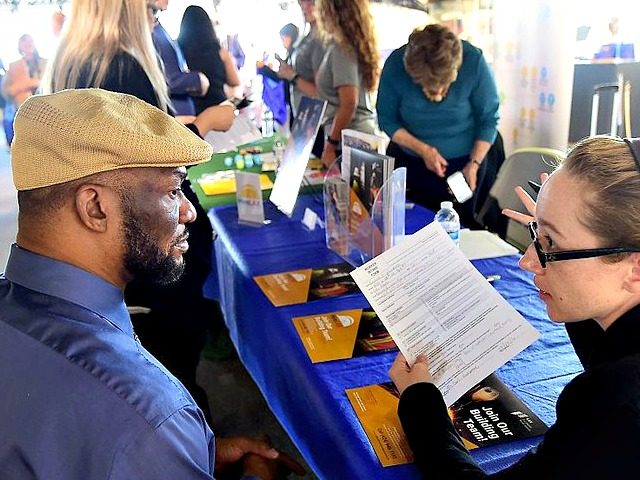Working class American men have struggled to increase their labor participation rate to workforce levels before the Great Recession of 2007, new data finds.
Working-age native-born American men between 18 and 65-years-old with no bachelor’s degree have fared far worse than their foreign-born counterparts in terms of economic recovery and re-entering the workforce, data from the Center for Immigration Studies (CIS) reveals.
Nearly seven percent of working-age native-born American men with working class backgrounds who were in the workforce in 2000 were not in the workforce in 2018. In 2000, about 82 percent of working class American men were in the workforce. By 2018, that labor participation rate has fallen to 75.1 percent — a 6.9 percent drop over a nearly two decade period.
Foreign men with no bachelor’s degree, on the other hand, have almost fully recovered since before the economic downturn when it comes to labor participation. Between 2000 and 2018, the labor participation rate for male foreign workers with no bachelor’s degree is just one percent less than what it was in the year 2000.
In 2000, about 87.2 percent of working class foreign men were in the workforce. By 2018, that labor participation rate has nudged down to 86.2 percent.
When 18 to 24-year-old working class men are not factored in, native-born Americans continue to be outpaced by low-skilled foreign men in regards to labor participation.
For instance, while only about 0.5 percent working class foreign men between 25 to 65-years-old have dropped out of the labor force between 2000 and 2018, about 3.7 percent of native-born working class American men of the same age group have fallen out of the workforce when current levels are compared to the year 2000.
CIS Director of Research Steve Camarota has found that the labor participation rate for native-born working class Americans has barely improved over the last six years while working class immigrants have improved their labor participation rate.
Despite consistently low unemployment, there continues to be 47.5 million native-born Americans and immigrants between 18 to 65-years-old who are not in the labor force. This is more than ten million more residents who are not in the labor force when compared to the 36.6 million who were not working in the year 2000. These residents are not counted in unemployment totals.
The U.S. mass illegal and legal immigration policy — whereby about 1.5 million mostly low skilled foreign workers are added to the population every year — has remained in place despite the economic downturn of 2007 and the country’s recovery.
John Binder is a reporter for Breitbart News. Follow him on Twitter at @JxhnBinder.



COMMENTS
Please let us know if you're having issues with commenting.